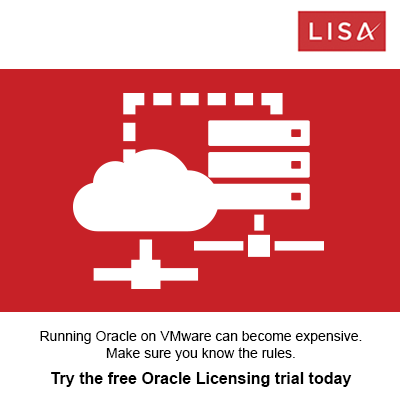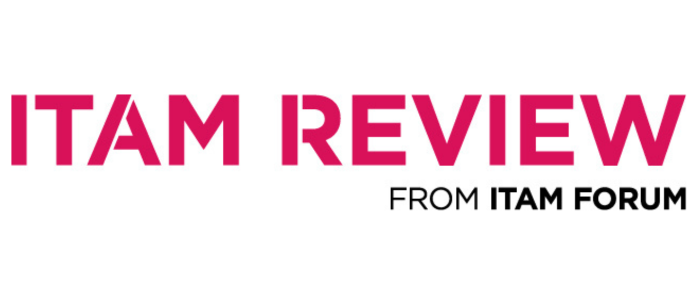Oracle to charge for Java from Jan 2019

Oracle have announced that, “after January 2019”, Java SE 8 public updates will not be available for “business, commercial or production use” without a commercial license.
Organisations will now need to take stock of all their software running Java SE 8 and start to work out what potential bill they are looking at next year.
Finding Java
The Java package – that will already be available within your organisation – includes a tool called “Java Usage Tracker” that will report on:
- The Java versions
- Application name
- Type (applet, command line etc.)
- Location
And more. While this may seem like the perfect tool to help find what Java you have, and where, there is one big caveat:
Oracle Java Usage Tracker requires a commercial license – even though it is included in the installer for the free components.
How does your SAM tool handle Java?
What’s on the roadmap?
The Oracle Java SE Roadmap site tells us that:
“… Oracle will not post further updates of Java SE 8 to its public download sites for commercial use after January 2019. Customers who need continued access to critical bug fixes and security fixes as well as general maintenance for Java SE 8 or previous versions can get long term support through Oracle Java SE Advanced, Oracle Java SE Advanced Desktop, or Oracle Java SE Suite”
New release schedule
Oracle, possibly taking a leaf out of Microsoft’s book, are changing the Java SE release cadence to every 6 months – rather than the 3 years between Java SE 8 and 9. This change will take effect from September 2018.
Pricing
For organisations that, for one reason or another, are unable to upgrade all their Java to the “latest major releases of the Oracle JDK or OpenJDK” – what are the costs going to look like?
A look at the April 2018 price list shows:
| Per NUP* | Support | Per CPU | Support | |
| Java SE Advanced Desktop | $40 | $8.80 | N/A | N/A |
| Java SE Advanced | £100 | $22 | $5,000 | $1,100 |
| Java SE Suite | $300 | $66 | $15,000 | $3,300 |
*Named User Plus
It seems likely this will be a significant cost for many companies, and an unbudgeted cost at that.
Next steps
You need to understand your situation. How much Java do you use, where and why?
From there, looking at whether some can be retired or perhaps a different tool can be used in its place.
Finally, for the Java that must remain – what is that going to start costing you from January 2019?
Not the first time
Back in 2016, it was reported that Oracle had started making moves to turn Java into more of a money spinner for the organisation. Apparently, Oracle License Management Services (LMS) hired 20 Java specialists to ramp up audits in that area. These tended to focus around the fact that while some parts of Java SE are free, some aren’t…and the free parts are only free for “general purpose computing” – a loosely defined term open to interpretation.
Further Reading
Oracle Price list – https://www.oracle.com/us/corporate/pricing/technology-price-list-070617.pdf
Java Usage Tracker – https://docs.oracle.com/javacomponents/usage-tracker/overview/
Java release cadence – https://blogs.oracle.com/java-platform-group/faster-and-easier-use-and-redistribution-of-java-se
Java Release Notice – https://java.com/en/download/release_notice.jsp
Can’t find what you’re looking for?
More from ITAM News & Analysis
-
83% of IT Managers Believe their Asset Data is Highly Accurate - Only 35% of the Business Agrees
New and interesting research from WanAware hits at the nub of the disconnect many IT Asset Managers might feel about the value they deliver. The ‘Closing the ITAM Confidence Gap. 2025 Survey Insights for IT Leaders’ ... -
Microsoft Q4: Cloud and AI Results Drive Record Revenue
On 30th July 2025, Microsoft released its much-anticipated FY25 Q4 earnings report. The results follow a surprisingly strong Q3, which exceeded the expectations of some of the most optimistic investors. The latest Q4 results continue with ... -
10 Strategic Lessons for Tackling Compliance, Audits, and Software Licensing Risk in 2025
The ITAM Forum’s 2025 global ITAM research report in partnership with Azul reveals some fascinating insights into the financial, operational, and compliance risks involved in software licensing and audits. This article provides a high-level overview of ...
Podcast
ITAM training
Similar Posts
-
Microsoft Q4: Cloud and AI Results Drive Record Revenue
On 30th July 2025, Microsoft released its much-anticipated FY25 Q4 earnings report. The results follow a surprisingly strong Q3, which exceeded the expectations of some of the most optimistic investors. The latest Q4 results continue with ... -
Microsoft Visual Studio Licensing Guide: Reduce Risks
(This article was reviewed and updated on 3 July 2025) Visual Studio Licensing Visual Studio subscriptions are licensed Per User with each licensed user able to. “install and use the software on any number of device”. ... -
Broadcom vs Siemens AG - A Brewing Storm
The ongoing legal battle between VMware (under Broadcom ownership) and Siemens is yet another example of why ITAM goes far beyond license compliance and SAM. What might, at first glance, appear to be a licensing dispute, ... -
Microsoft Power Apps: Current Pricing Models Comparison
Back in November 2021, Microsoft made Power Apps available under the pay-as-you-go (PAYG) model, alongside the traditional Per User/Per App options. This PAYG model has gained popularity. It ensures simple rightsizing for Power Apps environments. Here, ...




